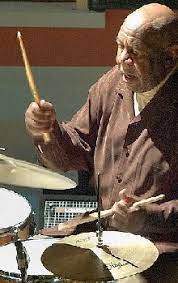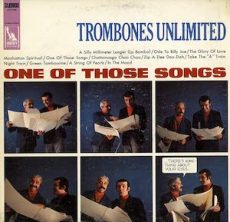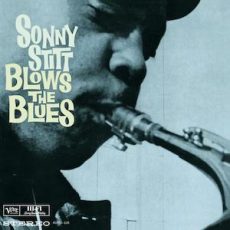
Daily Dose Of Jazz…
Joseph Samuel Thomas was born on May 31, 1933 in Newark, New Jersey. As a child, he learned to play alto and soprano saxophone, trombone, flute and piano, and also taught himself how to write music. Encouraged by his older brother, he began performing in clubs from the age of fifteen and was ultimately noticed by James Moody.
After enlisting in the United States Army he received a Purple Heart during combat in the Korean War. Returning to the States, Joe performed with Specks Williams and joined Rhoda Scott’s Trio in the early 1960s.
Thomas recorded with organist Jimmy McGriff and released a dozen albums under his own name in the late 1970s and early 1980s. As a sideman he also recorded five albums with Scott, and one each with Ambersunshower, Beck, Buddy Terry and Joe Tex.
Flutist, tenor saxophonist and bandleader Joe Thomas passed away in Orange, New Jersey at the age of 84 on July 26, 2017.
More Posts: flute,history,instrumental,jazz,music,piano,saxophone,trombone

Three Wishes
After a set, Pannonica sat down by Mickey Roker and during the conversation the subject of three wishes came up and when she inquired he answered:
- “Health first. I know I can always use that.”
- “Music – like, study some more. I don’t know what else I want, really! Because if I could maintain those two, I’d be cool. That’s enough.”
*Excerpt from Three Wishes: An Intimate Look at Jazz Greats ~ Compiled and Photographed by Pannonica de Koenigswarter
More Posts: baroness,drums,history,instrumental,jazz,music,pannonica,three,wishes

Daily Dose Of Jazz…
John Bernard Gordon was born May 30, 1939 in New York City, New York. He studied at Juilliard School and played with Buddy Johnson and Ray Draper in the 1950s.
Gordon worked with Lionel Hampton in 1961 and 1962 and with Lloyd Price and Sam Rivers later in the 1960s. By the 1970s, he was playing with Charles Tolliver, Clark Terry, Count Basie, Howard McGhee, and Frank Foster.
John led his own ensembles in the late 1970s, and his sidemen included Tolliver, Roland Alexander, Lisle Atkinson, Stanley Cowell, and Andrew Cyrille. During this decade he rejoined Hampton again, with whom he continued working until 1989.
After his Hampton residency Gordon played in Al Grey’s ensemble, Trombone Summit, and founded a group called Trombones Incorporated with Fred Joiner. When Joiner left the group in the early 1990s, he became its leader and changed its name to Trombones Unlimited. The late 1990s had him playing with Slide Hampton, Josh Roseman, Lafayette Harris, Martin Winder, Curtis Fuller, and Thilo Berg.
Gordon worked for several decades as a session musician for recordings and has also performed in pit orchestras for Broadway musicals. At 83, trombonist JOhn Gordon continues to play.
More Posts: bandleader,history,instrumental,jazz,music,trombone

Daily Dose Of Jazz…
Maria Jeanette Lindström was born on May 29, 1971 in Stockholm, Sweden and grew up in Östersund and Ås in the Jämtland region of Sweden. She made her recording debut for Caprice Records with Another Country in 1995, which earned her the Jazz in Sweden prize. Two more albums followed for the same label.
In 2003 Jeanette began a collaboration with the Bonnier Amigo Music Group on the album Walk. The album and its sequel, In the Middle of This Riddle, were warmly received by audiences and critics in Sweden and abroad. She recorded a side project album Whistling Away the Dark with Palle Danielsson, Bobo Stenson, Jonas Östholm, and Magnus Öström.
In 2007 the song Leaf, from In the Middle of This Riddle, was remixed by King Britt, a DJ and record producer from Philadelphia, and a track from the album was chosen for Volume 7 of the compilation series Saint-Germain-des-Prés Café. Her album Attitude & Orbit Control was released in 2009 and she received a Swedish Grammis at the awards ceremony the following year.
She has worked with pianist Steve Dobrogosz and the group ONCE with bassist Anders Jormin. She has appeared as guest soloist in small groups, big bands, and chamber and symphony orchestras.
Vocalist, composer and lyricist Jeanette Lindström continues to tour worldwide and explore the endless realms of jazz.
More Posts: bandleader,history,instrumental,jazz,music,vocal

Requisites
Sonny Stitt Blows The Blues | By Eddie Carter
It happened like this; after listening to Bud Powell ’57, I wanted something else to hear while reading. So, I chose another of my mom’s favorite albums that she loved playing while cooking dinner. Sonny Stitt Blows The Blues (Verve Records MG V-8374/MG V6-8374) is an excellent 1960 date culled from two 1959 December sessions. Sonny Stitt was equally fluent on the tenor and baritone sax but is exclusively heard here on the alto sax. He assembled an exceptional rhythm section to join him, Lou Levy on piano, Leroy Vinnegar on bass, and Mel Lewis on drums. My copy is the 1995 Classic Records US Stereo audiophile reissue (Verve Records MG VS-6149).
The opener, Blue Devil Blues, is the first of five tunes by Mr. Stitt. It starts with Mel’s brief introduction; next, Sonny emerges to establish the easygoing melody, then gives an exquisite opening statement. Lou follows with a few flowing lines, and Leroy punctuates the solos with a brief comment. Home Free Blues picks up the pace to a medium beat for Stitt’s alto to lead the quartet in the melody of this happy swinger. He continues laying down strong lines in the first solo that pack a lot of punch. Levy delivers a splendid statement next, then Vinnegar takes a soulful walk ahead of the reprise and ending.
Blue Prelude is a pretty song by Isham Jones that Lou sets in motion with a concise introduction segueing into Sonny’s lightly swinging opening chorus and the song’s only interpretation. The rhythm section lays a lush foundation behind him into the song’s exit. Frankie and Johnny is the story of a couple’s relationship that ends tragically because of the young man’s infidelity. The quartet brings out the best in this old chestnut, with Stitt stating the melody. He then gives an impressive lead solo. In the second statement, Levy gets to the song’s heart; then, Vinnegar has a delightfully light reading ahead of Stitt’s final thoughts.
Side Two starts with Birth of The Blues by Ray Henderson, Lew Brown, and Buddy DeSylva. The quartet opens the song with a mellow theme, then steps aside for Sonny to show off his impeccable chops in the opening statement. Lou is up next with a fine outing, then Leroy has a delightful reading before the climax. A Blues Offering is Sonny’s slow-tempo invitation for the group to relax and take it easy from the start of the melody. Stitt sets the scene thoughtfully and with care first, then Levy responds with tenderness and sincerity in the subsequent interpretation preceding the ensemble’s graceful finale.
Sonny Stitt’s Hymnal Blues is unlike any song I heard when I attended church as a youngster. The foursome starts with a vibrant opening chorus; then, Sonny takes flight and wails in the opening presentation. Lou matches the altoist in the following statement. Leroy wraps it up with a neat finale before the quartet’s closing chorus disappears into nothingness. Vinnegar’s bass introduces After Morning Blues, segueing into Stitt’s sultry theme. The saxophonist has the song’s only reading and turns in a sensuously warm interpretation closely shadowed by the rhythm section’s gorgeous groundwork into the culmination.
The initial producer and the recording engineer of Sonny Stitt Blows The Blues are unknown. However, the sound quality of this Classic Records reissue is fantastic. Bernie Grundman mastered the album, and the instruments emerge from your speakers as if the quartet is playing right before you. The record is pressed on 180 grams of audiophile vinyl and silent until the music starts. If you’re not already a fan of Sonny Stitt, this is an excellent choice to begin your journey into his extensive discography. Every time I hear it, I’m taken back to my childhood and a pleasant memory of my mom. Sonny Stitt Blows The Blues is an enjoyable album from first note to last with a superb supporting cast that highlights the leader’s capabilities as a composer. If you love jazz, I can’t recommend it enough for a spot in your library!
~ Birth of The Blues, Frankie and Johnny – Source: Wikipedia.org © 2023 by Edward Thomas Carter
More Posts: choice,classic,collectible,collector,history,instrumental,jazz,music,saxophone




